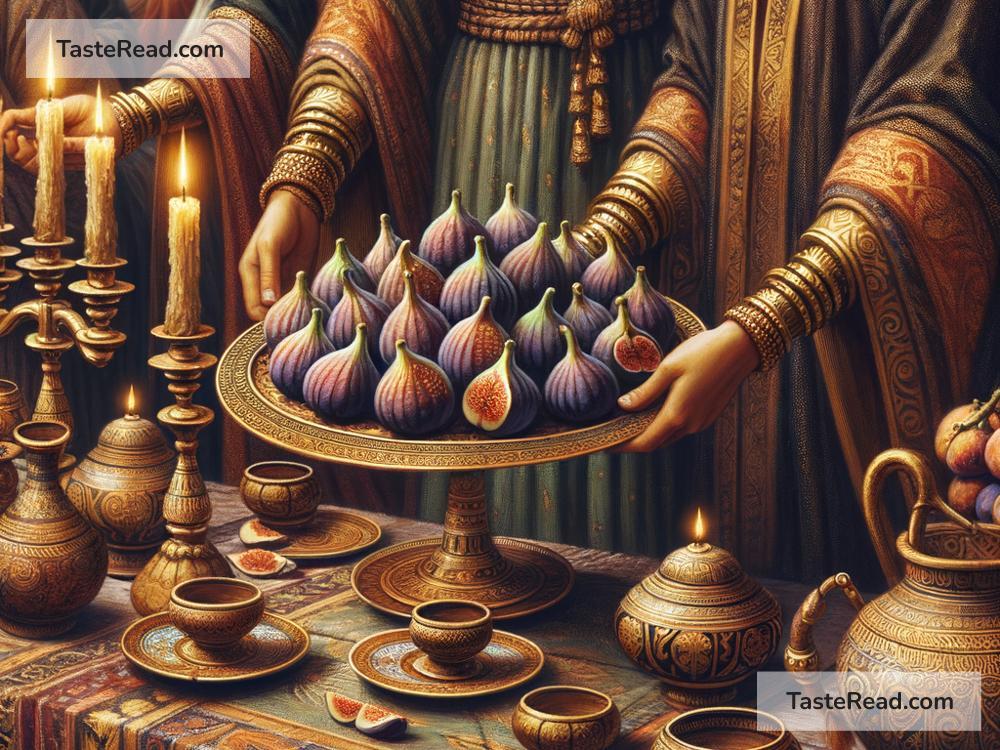The Surprising Uses of Figs in Ancient Rituals
Figs are small, sweet fruits that grow on fig trees, and they’ve been loved by people all over the world for thousands of years. While most of us think of figs as a tasty treat, these fruits actually had much deeper meanings in ancient times. They were not just eaten but also used in rituals, ceremonies, and spiritual practices. In this blog, we’ll explore the fascinating ways figs played a special role in the traditions of ancient cultures.
Figs in Mythology and Religion
Figs appear in many ancient stories and religious texts. For example, in the Bible, the fig tree is mentioned several times. Adam and Eve used fig leaves to cover themselves in the Garden of Eden, making figs one of the earliest symbols in religious history. This connection gave figs a reputation for representing knowledge, life, and human vulnerability.
In ancient Egypt, figs were considered sacred. They were often placed in tombs and burial chambers to nourish the souls of those who had passed away. Egyptians believed figs had a connection to the gods and could help guide the deceased to the afterlife.
In Greek mythology, figs were linked to Demeter, the goddess of agriculture, and Dionysus, the god of wine and celebration. Figs symbolized fertility, abundance, and joy. In honor of these deities, ancient Greeks would offer figs during festivals and ceremonies, hoping to bring blessings and prosperity to their lives.
Figs in Fertility Rituals
One of the most surprising uses of figs in ancient rituals was their role in fertility ceremonies. Figs were seen as a symbol of fertility and reproduction, thanks to their unique shape and the many seeds inside them. People believed that eating figs or including them in rituals would increase their chances of having children and ensure a bountiful harvest.
In some cultures, figs were used in marriage ceremonies to bless the union of couples. Guests would give figs as gifts, believing that the fruit would bring happiness, harmony, and many children to the newlyweds. Farmers, too, would use figs in rituals before planting season to ensure their crops grew strong and plentiful.
Figs as Offerings to the Gods
In ancient times, offering food to the gods was a common practice to gain their favor or express gratitude. Figs, being sweet and delicious, were considered a special gift that gods would appreciate. Temples across different cultures, from Mesopotamia to India, often included figs in their offerings.
In India, figs were associated with the sacred fig tree, also known as the banyan tree or Buddhi tree. This tree was considered holy because it was said to give shade and wisdom. Offerings of figs were made to honor the tree and the divine powers it represented.
In Rome, figs were offered to Saturn, the god of agriculture and time, during the festival of Saturnalia. This week-long celebration was filled with feasting, gift-giving, and honoring the gods, with figs often playing an important role in the festivities.
Figs in Healing Rituals
Ancient cultures believed figs had special healing powers, both physically and spiritually. These fruits were used in rituals to treat illnesses or drive away evil spirits. People would eat figs or place them in ritual spaces while chanting prayers to cure diseases or protect themselves from harm.
In old Persian traditions, figs were part of purification rituals. They were thought to cleanse the body and mind and remove negative energy. Similarly, in ancient Greece, figs were believed to strengthen the body and help a person achieve better health.
Some cultures also used figs in rituals to promote mental clarity. People believed figs could help them focus and connect with higher levels of consciousness. This made figs an important part of spiritual practices and meditation.
Figs in Ritual Feasts
Figs were not just symbolic; they were also practical. Many ancient rituals included feasts, and figs were often a favorite food to serve. Their natural sweetness, combined with their ability to last a long time when dried, made them perfect for celebrations.
During religious festivals, figs were shared among participants as a way to bond with one another and the gods. Eating figs together created a sense of unity and community during rituals. They also represented the idea of sharing abundance and prosperity.
Figs as Symbols of Peace
In some ancient cultures, figs were symbols of peace and harmony. In the Middle East, it was believed that planting a fig tree could bring stability and friendship to a community. Leaders or elders might include figs in ceremonies to resolve conflicts, signifying a fresh start and mutual understanding.
Similarly, in ancient Rome, figs were a symbol of goodwill. The act of giving someone figs was considered a gesture of friendship, respect, and hope for peaceful relationships.
Conclusion
The humble fig is much more than a tasty fruit—it has a deep and surprising history in ancient rituals. From fertility ceremonies to offerings for the gods, figs carried meanings of life, abundance, health, and unity. These small fruits were treasured not just for their sweetness but also for their symbolic power. Next time you enjoy a fig, take a moment to think about its rich history and the many ways it brought people closer to the divine and to each other.


